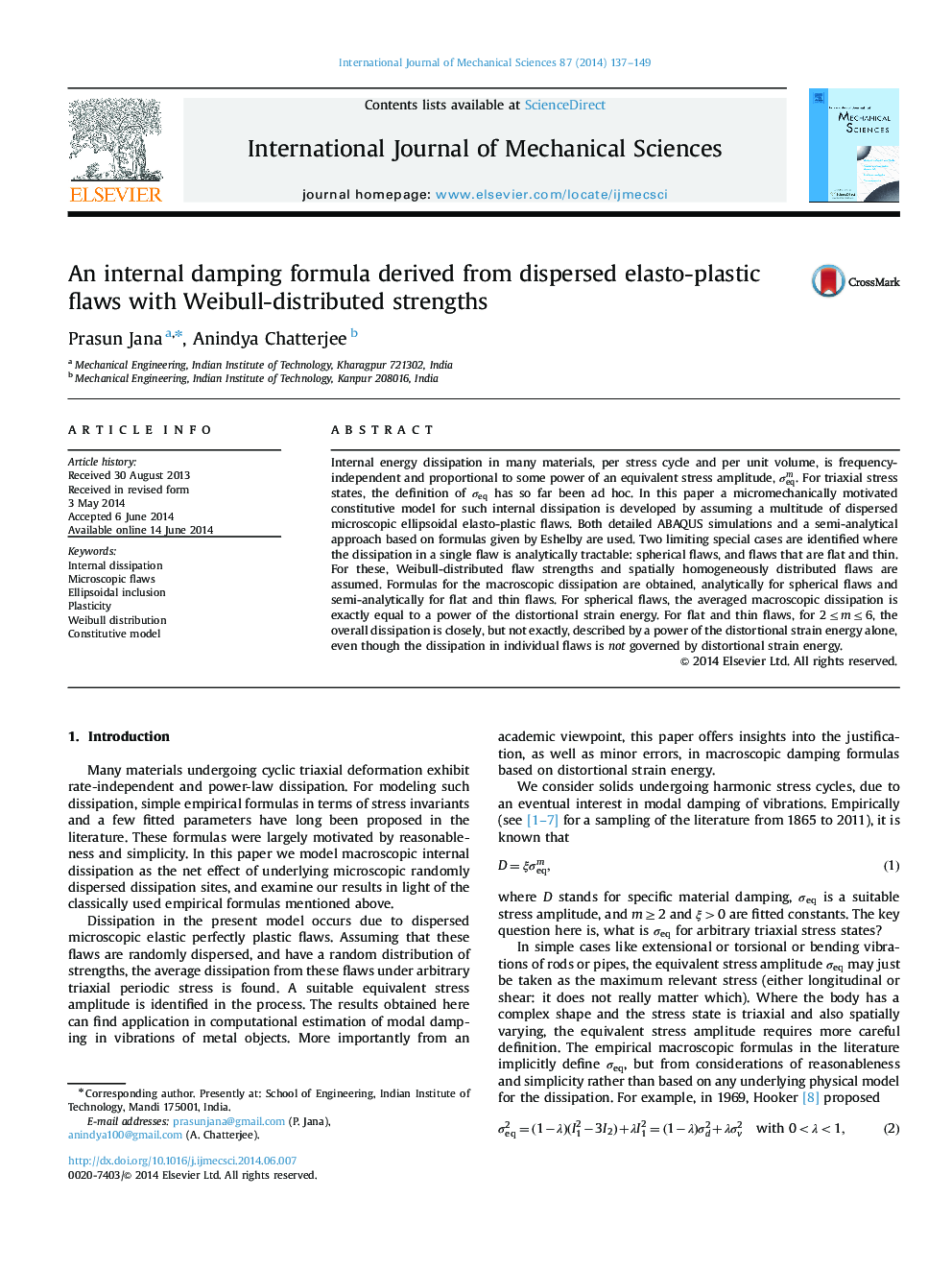| Article ID | Journal | Published Year | Pages | File Type |
|---|---|---|---|---|
| 782320 | International Journal of Mechanical Sciences | 2014 | 13 Pages |
•We study power-law damping under multiaxial stress, assuming elasto-plastic microscopic flaws.•Ellipsoidal flaws are studied using ABAQUS as well as Eshelby׳s formulas, with a perfect match.•Two limits, spherical flaws and thin and flat flaws, are considered in detail.•Weibull-distributed flaw strengths and random orientations of thin flaws are assumed.•Net average cyclic dissipation is, surprisingly, governed by distortional energy in both cases.
Internal energy dissipation in many materials, per stress cycle and per unit volume, is frequency-independent and proportional to some power of an equivalent stress amplitude, σeqm. For triaxial stress states, the definition of σeqσeq has so far been ad hoc. In this paper a micromechanically motivated constitutive model for such internal dissipation is developed by assuming a multitude of dispersed microscopic ellipsoidal elasto-plastic flaws. Both detailed ABAQUS simulations and a semi-analytical approach based on formulas given by Eshelby are used. Two limiting special cases are identified where the dissipation in a single flaw is analytically tractable: spherical flaws, and flaws that are flat and thin. For these, Weibull-distributed flaw strengths and spatially homogeneously distributed flaws are assumed. Formulas for the macroscopic dissipation are obtained, analytically for spherical flaws and semi-analytically for flat and thin flaws. For spherical flaws, the averaged macroscopic dissipation is exactly equal to a power of the distortional strain energy. For flat and thin flaws, for 2≤m≤62≤m≤6, the overall dissipation is closely, but not exactly, described by a power of the distortional strain energy alone, even though the dissipation in individual flaws is not governed by distortional strain energy.
